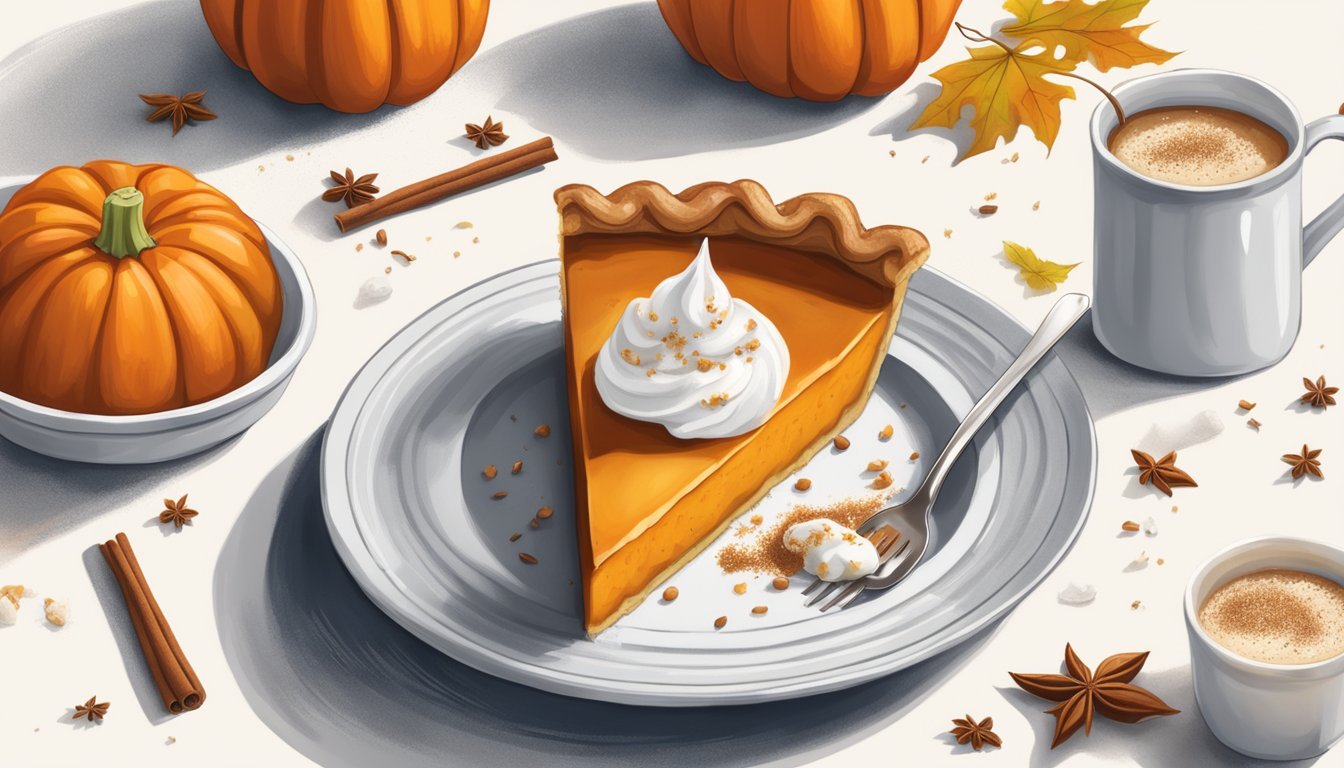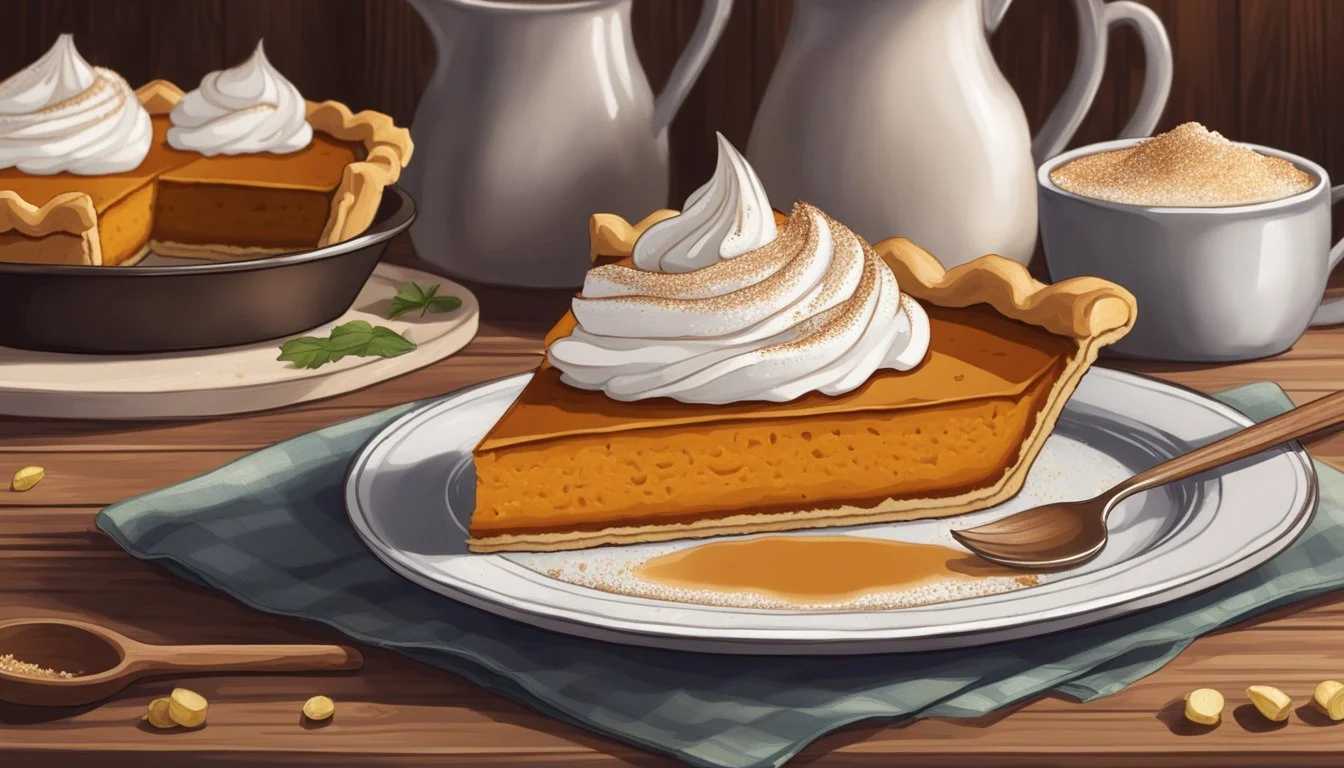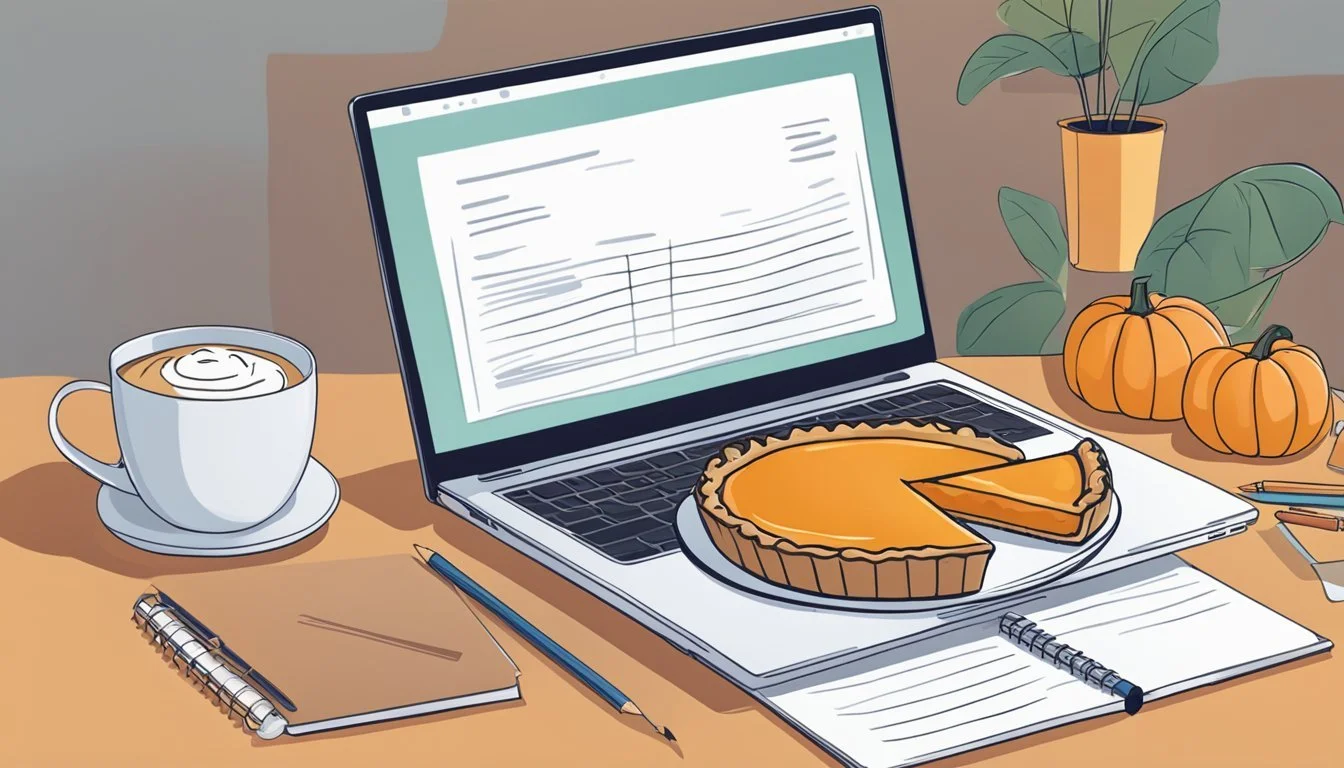Is Pumpkin Pie Vegan?
Unveiling the Facts About This Classic Dessert
Traditional pumpkin pie, a staple of American Thanksgiving feasts and autumnal celebrations, typically contains ingredients that are not vegan, such as eggs and condensed milk. These components are integral to giving the classic pumpkin pie its creamy texture and rich flavor. However, the rise of plant-based diets has led to a growing demand for vegan alternatives that exclude all animal products, including dairy and eggs.
Vegan pumpkin pie addresses this demand by substituting these non-vegan ingredients with plant-based alternatives. Common substitutions include canned coconut milk or coconut cream for dairy, and cornstarch or arrowroot powder as thickeners to replace eggs. Sweeteners such as brown sugar or maple syrup are used, and the blend of spices that give pumpkin pie its signature taste—cinnamon, ginger, nutmeg, and cloves—remains unchanged, as they are naturally plant-derived.
The process for making vegan pumpkin pie often mirrors that of its traditional counterpart, involving a mix of pumpkin puree and the aforementioned vegan ingredients poured into a pie crust and baked. Many recipes further demonstrate that a switch to plant-based ingredients doesn't compromise the pie's desired creamy texture and depth of flavor, making vegan pumpkin pie a viable option for those adhering to a vegan lifestyle or anyone interested in plant-based dessert offerings.
Understanding Veganism
When exploring whether a food product like pumpkin pie is vegan, one must consider the definition of vegan products and recognize common non-vegan ingredients typically found in such dishes.
Defining Vegan Products
Vegan products strictly exclude all forms of animal exploitation and cruelty. They do not contain ingredients derived from animals, which includes meat, dairy, eggs, and honey. In the context of pumpkin pie, this would mean ensuring that all components are plant-based. Plant-based is a term often used interchangeably with vegan, though it primarily focuses on the diet's composition being mostly from plants, and does not always account for ethical considerations.
Here is a list of properties that define vegan products:
No animal-derived ingredients
No animal testing involved
Often labeled "vegan" or "dairy-free"
May include symbols like the certified vegan logo
Common Non-Vegan Ingredients
When examining products such as pumpkin pie for vegan suitability, certain ingredients frequently emerge as non-vegan. Eggs and dairy are key components in traditional pumpkin pie recipes, which are animal-derived and therefore not vegan-friendly. Even products labeled as "non-dairy" can sometimes contain milk derivatives like casein or whey, which are not suitable for vegans.
Here's a table identifying non-vegan ingredients often found in pumpkin pies:
Non-Vegan Ingredient Description Eggs Often used as a binder in pies Milk Commonly found in the filling Butter Typically used in the crust Gelatin Sometimes used to set the filling
Awareness of these ingredients can help consumers and chefs alike make informed choices to ensure pumpkin pies are vegan.
Components of Pumpkin Pie
Understanding the components of a pumpkin pie is crucial to determining whether it can be vegan. Each element, from the filling to the crust, contributes to the overall flavor and texture. This section dissects the traditional and vegan options for making pumpkin pie.
Pumpkin Pie Filling
The filling of a pumpkin pie typically includes pumpkin puree as the base ingredient, which is inherently vegan. To this, sweeteners like brown sugar or maple syrup are added, both of which are plant-based. Spices such as cinnamon, ginger, nutmeg, and cloves infuse the filling with the classic pumpkin pie flavor; occasionally, pumpkin pie spice may be used as an all-in-one substitute.
For texture and consistency, cornstarch can serve as a thickening agent, while full-fat coconut milk or coconut cream provides the creamy richness characteristic of traditional pumpkin pie filling. Additionally, some recipes call for vanilla extract to add depth to the flavor profile.
Pie Crust
The crust forms the foundation of the pumpkin pie and can make or break its claim to being vegan. Typically, pie crust is made from all-purpose flour, and for those looking for a gluten-free option, gluten-free pie crust mixes are available. Vegan versions of pie crust often use vegan butter or oil as the fat component, as opposed to traditional butter or lard.
Crusts may be homemade or store-bought; the latter offers convenience and is occasionally offered in a vegan-friendly form. When making a crust at home, one can opt for a traditional crust with vegan butter, a graham cracker base, or even a crust made with nuts and dates. Ensuring strict adherence to vegan ingredients is essential when selecting or preparing a pumpkin pie crust.
Preparing Vegan Pumpkin Pie
When preparing a vegan pumpkin pie, one must focus on choosing plant-based ingredients, ensuring the crust is dairy- and egg-free, and achieve a creamy filling texture that replicates the classic non-vegan version. Precise instructions and proper oven use are critical in attaining the perfect golden-brown finish.
Selecting the Ingredients
A vegan pumpkin pie starts with selecting the right ingredients. Canned pumpkin is preferred for its consistency and convenience, but fresh pumpkin can be used if cooked and pureed to a smooth texture. For the creamy element, one should choose coconut milk or almond milk, with coconut milk offering a richer texture. Ingredients should be organic when possible to enhance the quality of the pie.
Making the Pie Crust
The pie crust should be vegan; this means no butter or other animal products. An easy vegan pie crust can be made using a food processor to combine flour, salt, and coconut oil or vegan butter until the mixture resembles coarse crumbs. Slowly add ice water just until the dough comes together. It should then be rolled out and placed into the pie dish, gently pricked with a fork, and set to chill.
Mixing the Filling
The filling should be thick and creamy to mirror traditional pumpkin pie. In a blender, combine the pumpkin puree with the chosen plant-based milk, sugars, and thickening agents like cornstarch or arrowroot. Add spices such as cinnamon and nutmeg for flavor. The aim is a homogeneous and smooth blend which is then poured into the prepared pie crust.
Baking Instructions
Preheat the oven to 350°F (180°C). The pie mixture needs to be poured into the chilled crust, and then baked until the edges are golden-brown and a toothpick comes out clean from the center. The baking time is typically around 50-60 minutes. Protecting the edges of the crust with a pie crust shield is advisable to prevent burning. After baking, let the pie cool before refrigerating it for a couple of hours; this step is crucial for allowing the pie to set properly, resulting in a creamy texture upon serving.
Vegan Pie Variations
When exploring the world of vegan desserts, variations of the beloved pumpkin pie present indulgent options without using animal products. Two standout twists on the classic include vegan pumpkin cheesecake and vegan sweet potato pie, each offering a unique flavor and texture profile.
Vegan Pumpkin Cheesecake
Vegan pumpkin cheesecake marries the creamy, dense texture of a traditional cheesecake with the warm spices of pumpkin pie. For the base, cashews soaked and blended yield a rich creaminess, often enhanced with coconut cream or silken tofu to achieve the desired thickness. Sweetness is typically derived from pure maple syrup or agave nectar, while the inclusion of pumpkin puree and spices like cinnamon, ginger, and nutmeg infuse the dessert with quintessential autumnal flavors. The crust may be crafted from a mixture of ground nuts, dates, and oats, offering a gluten-free alternative when necessary.
Vegan Sweet Potato Pie
Similar in appearance to its pumpkin counterpart, vegan sweet potato pie distinguishes itself with a sweeter, earthier taste owing to the main ingredient - sweet potatoes. To prepare the filling, one must bake or boil sweet potatoes (What wine goes well with sweet potatoes?) until tender, then blend them until smooth with plant-based milk, sweeteners like brown sugar or maple syrup, and the same warming spices used in pumpkin pie. This mixture is poured into a crust that can be made from traditional pastry dough or a gluten-free base comprising flours like almond or oat. Once baked, it's crucial to allow the pie to cool and set, often necessitating a few hours of refrigeration.
In crafting these variations, vegan bakers substitute animal-based ingredients with plant-based alternatives, ensuring that the final product aligns with vegan dietary preferences while still delivering the nostalgic flavors of classic holiday desserts.
Serving and Presentation
When serving pumpkin pie, particularly as a Thanksgiving or holiday dessert, presentation plays a vital role in enhancing the overall dining experience. Proper presentation adds visual appeal and can complement the rich, spiced flavors of the pie.
Topping Options
Vegan Whipped Cream:
Whipped Coconut Cream: It has a creamy texture and can be sweetened with powdered sugar and flavored with vanilla extract.
Store-bought Vegan Whipped Cream: Readily available and convenient for those who prefer not to make their own.
Nuts:
Pecans: A handful of pecans can add a delightful crunch and nutty flavor.
Garnishing Tips
Spices and Aromatics:
Cinnamon Sticks: These can be placed on top of the pie or on the side for a hint of fall essence.
Fall Spices: A light dusting of cinnamon or nutmeg over the whipped cream can elevate the aromatics of the dessert.
Pumpkin-Themed Garnishes:
Small Pumpkin Muffins: These can be arranged around the pie for a festive touch.
Pumpkin Shapes: Utilizing cookie cutters to make pumpkin-shaped garnishes from pie crust leftovers provides a thematic charm.
Presenting the pumpkin pie with these toppings and garnishes can make it a standout Thanksgiving dessert that is both appealing and aligned with vegan dietary preferences.
Storing and Preserving
Proper storage of pumpkin pie, especially when vegan, is essential for maintaining its freshness and flavor. The section below offers guidance on how best to refrigerate and freeze pumpkin pie, as well as tips on avoiding sogginess.
Refrigeration
Pumpkin pie should be kept in the refrigerator at temperatures below 40°F (4°C) to slow the growth of bacteria. It is advisable to store the pie in its original packaging or place it in an airtight container to maintain texture and prevent moisture loss. For optimal quality, consume refrigerated leftovers within 3-4 days.
Freezing
If one intends to store pumpkin pie for an extended period, freezing is a viable option. Wrap the pie tightly in plastic wrap or aluminum foil and place it in the freezer, where it can be kept for up to one month. Thaw the pie in the refrigerator prior to serving to ensure even defrosting.
Avoiding Sogginess
To maintain the pie's ideal texture, one should avoid condensation and moisture buildup that can lead to sogginess. Here are specific steps to keep the crust crisp and the filling firm:
Allow the pie to cool completely before storing to prevent steam buildup.
If using a container, line it with a paper towel to absorb any excess moisture.
For the freezer, ensure the pie is wrapped securely to prevent freezer burn.
Societal and Cultural Context
Pumpkin pie is a cultural staple especially pervasive during holiday celebrations, and its adaptation into vegan diets reflects broader societal shifts towards plant-based lifestyles.
Veganism in Holidays
During holidays such as Thanksgiving and Christmas, pumpkin pie is a traditional dessert. These are times when food is not just sustenance but a symbol of culture and celebration. Increasingly, those who follow a vegan lifestyle seek alternatives to continue participating in these traditions without compromising their dietary choices. Vegan pumpkin pie has become a solution, offering the opportunity to honor traditions in an inclusive manner that aligns with vegan values.
Thanksgiving: A central holiday for pumpkin pie consumption, featuring vegan options can be an act of inclusion for guests with dietary restrictions.
Christmas: Often hosts a variety of traditional foods, including pumpkin pie, and vegan versions can extend the festive spirit to all participants.
Appreciation of Pumpkin Dishes
Pumpkin dishes hold a significant place in culinary traditions, with pumpkin pie standing as a quintessential autumnal dessert. The appreciation of pumpkin-based foods extends beyond holidays and speaks to a seasonal enjoyment.
Cultural Significance: Pumpkins are associated with fall harvests and are integral to various festivals and community gatherings, marking seasonal transitions.
Vegan Adaptation: As veganism grows, so does the repertoire of pumpkin dishes that are adapted to meet vegan standards, preserving taste and texture without animal-derived ingredients.
Online Engagement
The rise of veganism has fostered substantial online engagement, particularly in sharing content and fostering community interaction. Platforms like Instagram, Pinterest, and Facebook serve as hubs for exchanging ideas, recipes, and experiences with vegan baking, including pumpkin pie.
Sharing on Social Media
Social media platforms have taken center stage in the dissemination of vegan recipes and cooking techniques. Instagram is renowned for its visually appealing posts, where users share images and short videos of their vegan pumpkin pies, often accompanied by recipes and baking tips. Pinterest offers a space for users to collect and share vegan baking boards that are rich in diverse pumpkin pie recipes and baking tips. As for Facebook, it is instrumental in spreading vegan recipes through groups and pages, where users engage by posting their own creations and modifications to recipes, like vegan pumpkin pie, which encourages others to try and share as well.
Vegan Baking Communities
Within the digital landscape, vegan baking communities have emerged as sources of support, knowledge, and inspiration. Members actively engage in community interaction by sharing recipes, offering substitutions for traditional ingredients, and providing feedback on each other's baking endeavors. In these communities:
Members often exchange tips and techniques for perfecting vegan pumpkin pie.
Experienced bakers provide guidance to novices, ensuring successful baking experiences for all levels of expertise.
Digital platforms facilitate these communities, where the sharing of vegan-friendly recipe variations — including those for pumpkin pie — is not just common but encouraged.
Feedback and Iteration
When crafting the perfect vegan pumpkin pie, feedback and iteration are crucial components. They ensure the recipe not only meets but exceeds expectations. Cooks often rely on comments and ratings to refine their recipes, while continuous adjustment helps perfect the pie to suit diverse palates.
Comments and Ratings
Comments provide valuable qualitative feedback. They offer insights into the experience of those who have tried the recipe, highlighting aspects like taste, texture, and ease of preparation. Cooks can look for recurring themes within the comments for areas of improvement.
Ratings offer a quantitative measure of the recipe's success. These can range from a 1 to 5 star scale, allowing others to quickly gauge the overall reception of the recipe. A high average rating often correlates with a successful recipe, but it's essential to read individual comments for specific feedback.
Recipe Adjustments
Recipe improvement is an ongoing process informed by both positive and negative feedback. Cooks should consider the feedback loop—an essential mechanism where they make adjustments to recipes based on comments and ratings and then seek further feedback on those changes.
Adjustments can range from minor tweaks to major overhauls:
Minor Adjustments: Altering the amount of spices like cinnamon or ginger for flavor balance.
Major Overhauls: Switching out key ingredients, such as the type of sweetener or fat used.
By responding to feedback and being willing to make iterative changes, cooks can evolve their vegan pumpkin pie recipes into crowd-pleasers.







